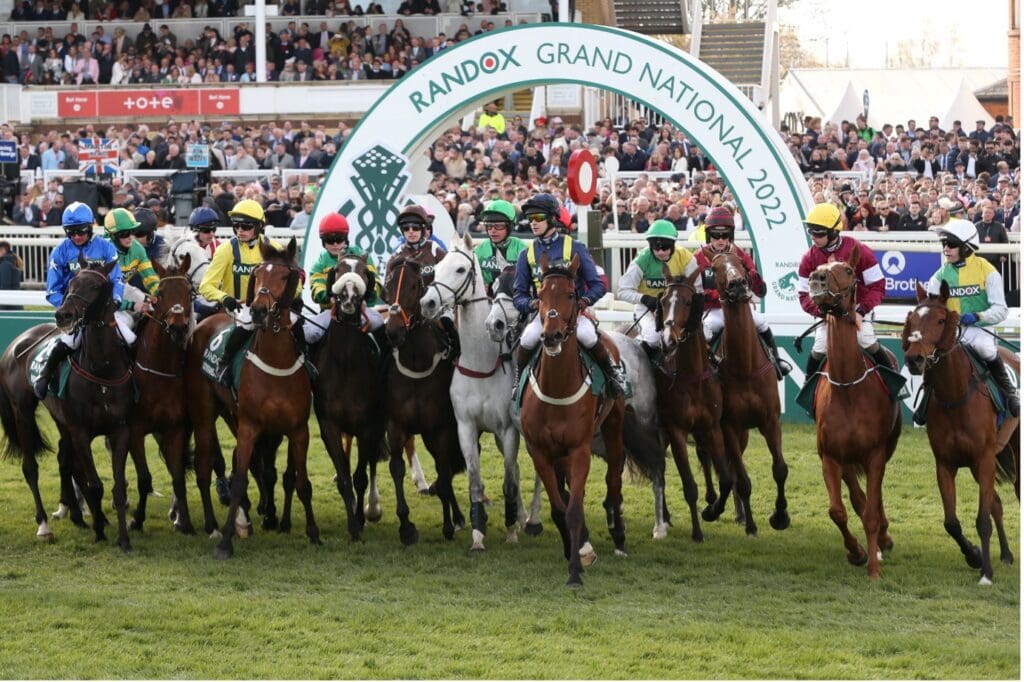As Aintree prepares to host the 2025 Grand National, the fabled Merseyside turf once again beckons the finest steeplechasers to participate in racing’s most democratic spectacle.
For nearly two centuries, these hallowed grounds have witnessed the full spectrum of equine fortunes—from the improbable triumphs of 100/1 outsiders to the crushing disappointments of heavily-backed favourites.
The race’s notorious unpredictability forms the very fabric of its enduring appeal, a capricious examination where reputation, form, and market confidence often dissolve amid the rigours of four miles and thirty formidable fences.
The approaching renewal arrives steeped in anticipation, with connections of I Am Maximus harbouring dreams of consecutive victories that would echo Tiger Roll’s recent achievements. Yet the weight of history suggests caution against presumption—for every Red Rum or Tiger Roll that fulfils their destiny, countless other celebrated contenders have faltered when victory seemed assured.
The annals of National Hunt racing are replete with tales of apparent certainties undone by Aintree’s unique challenges, their failures etched as indelibly into the race’s folklore as the most celebrated successes.
As punters pore over horse racing tips and calculate odds for the 2025 renewal, a journey through some of the Grand National’s most notable disappointments serves as a timely reminder of the race’s gloriously unpredictable essence and the folly of declaring any outcome foregone.
These cautionary tales of favourites who flattered to deceive underscore why the Grand National retains its position as racing’s ultimate test—a contest where courage, luck, and circumstance intertwine to shape outcomes that frequently defy conventional expectation.
1936: Golden Miller at 2/1
Golden Miller arrived at the 1936 Grand National as the most celebrated steeplechaser in history, having secured an unprecedented five consecutive Cheltenham Gold Cups. His dominance prompted bookmakers to install him as the prohibitive 2/1 favourite despite the race’s notorious unpredictability.
The racing public anticipated witnessing greatness — instead, they observed racing’s humbling capacity for anticlimax when the champion refused at the Canal Turn—a stunning rejection that underscored the Grand National’s status as an examination fundamentally different from even the Gold Cup’s searching test.
1956: Devon Loch at 5/1
Devon Loch’s inexplicable collapse merely 40 yards from immortality remains racing’s most harrowing disappointment.
Owned by Queen Elizabeth The Queen Mother and ridden by Dick Francis, the 5/1 joint-favourite had established a commanding lead on the run-in when, in a moment that defies rational explanation, he performed a bizarre half-jump and sprawled onto his belly.
The Queen Mother’s philosophical response—”That’s racing”—belied the crushing disappointment of a triumph snatched away in the most bewildering circumstances imaginable, surrendering victory to E.S.B. in a moment that transcended sport to become cultural touchstone.
1973: Crisp at 9/1
Australian champion Crisp’s heroic failure epitomises the race’s capacity for both exhilaration and heartbreak. Carrying 12 stone, the magnificent chestnut built an apparently insurmountable 15-length advantage after the final fence.
Yet under this oppressive weight, his reserves gradually depleted during the punishing run-in. In the race’s closing strides, the relentless Red Rum—receiving 23 pounds—overtook him to claim victory by three-quarters of a length, transforming certain triumph into agonising defeat despite a performance of extraordinary courage that, in defeat, secured perhaps greater immortality than many winners.
1997: Go Ballistic at 7/1
Go Ballistic approached the 1997 National with compelling credentials, having recently secured fourth place in the Cheltenham Gold Cup. This performance established him as clear 7/1 favourite in a typically open renewal. However, Cheltenham’s championship contest had extracted a physical toll that became evident as the National unfolded.
After struggling throughout, Go Ballistic was eventually pulled up before the penultimate fence, having burst a blood vessel—a sobering reminder of the physiological demands imposed by steeplechasing’s most gruelling competitions in quick succession.
2007: Point Barrow at 8/1
Point Barrow’s status as 8/1 joint-favourite reflected impressive credentials, including victory in the prestigious Irish National the previous season.
Connections approached Aintree with justifiable confidence in a horse with proven stamina and jumping ability.
Yet all aspirations dissolved in mere seconds when Point Barrow fell heavily at the very first fence—a catastrophic outcome that encapsulated the Grand National’s capacity to crush expectations with brutal efficiency and exemplified why even the most meticulously prepared contenders can find their challenge ended before it has meaningfully begun.
The Grand National’s unpredictability is what makes it so compelling, as history has shown that even the strongest favourites can fall short. Every renewal reminds us that past form and preparation are no guarantees for success in Aintree’s ultimate test. As the 2025 race nears, one thing is certain—expect the unexpected.
Underage gambling is an offence. You must be over 18 years old to gamble.
Any form of gambling should always be fun, playing in a way that is right for you. It’s good to set limits, take time out or set up reminders.
Please gamble responsibly and in moderation.
For more information on the tools available to help to keep you safe or if you want advice or support you can call the National Gambling Helpline on 0808 8020 133 (England, Scotland and Wales or visit Gamblingtherapy.org).

